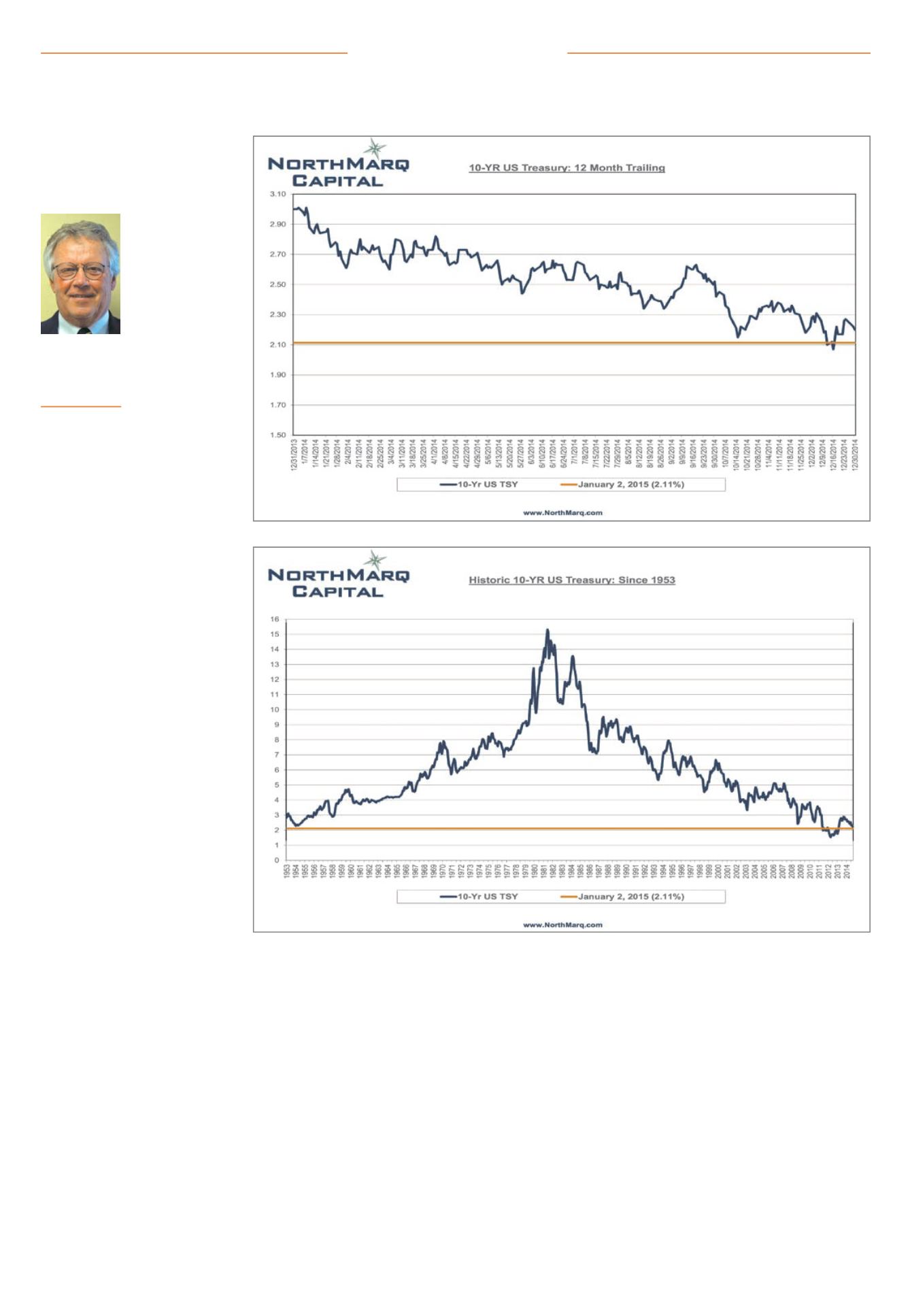

Page 10
— Multifamily Properties Quarterly — January 2015
T
he Colorado Real Estate Jour-
nal sat down with real estate
capital veteran Steve Bye
of NorthMarq Capital and
asked him to comment on
the trends in the multifamily lend-
ing arena and his
thoughts about
2015.
CREJ:
How would
you assess the cur-
rent environment
for apartment
financing?
Bye:
To quickly
summarize, bor-
rowers are in the
best of all worlds.
There are no prac-
tical limits on the
availability of capi-
tal from multiple lending sources.
U.S. Treasury or London Interbank
Offered Rate index rates are near
all-time low points and, on top of
that, risk spreads have continued to
compress.
CREJ:
Discuss the type of lenders
who are most active.
Bye:
Most of the apartment loans
that we are arranging are through
the apartment agencies Freddie
Mac and the Fannie Mae Delegated
Underwriting and Servicing platform
through our affiliate, Amerisphere.
However, we have also closed a num-
ber of permanent loans with life
insurance companies. Our Denver
office originated a few commercial
mortgage-backed security apartment
loans in 2014, although these were
the exceptions. We were less active
in 2014 with Federal Housing Admin-
istration originations compared to
2013 and 2012.
CREJ:
Why are the agency lenders so
attractive to borrowers?
Bye:
Many of the agency loans are
focused on financing property acqui-
sitions. Although the agencies have
strict underwriting guidelines, they
are receptive to the lower cap rates
and are comfortable lending up to
80 percent of the purchase price.
In addition, they are more likely to
offer interest-only payments. They
can also provide 30-year amortiza-
tion schedules for older properties.
Another significant attraction is the
ability of the agencies to provide
supplemental loans, executed in a
very streamlined manner. Agency
loans are typically subject to defea-
sance prepayment requirements,
which makes it a cumbersome pro-
cess, although it could result in a
discounted payoff in the event of a
high interest rate environment in the
future.
CREJ:
You mentioned insurance
company lenders. How does that sec-
tor approach apartment lending?
Bye:
First of all, there are at least
three dozen insurance company
lenders, so there is a wide array of
underwriting and risked-based vari-
ables that will distinguish one lender
from the next. From my perspective,
life companies are nimble and can
provide a menu of special features
that a borrower may covet, as well as
the ability to close a loan in as little
as 30 days.
However, regardless of the pur-
chase price or an appraisal, many life
companies use internal underwrit-
ing standards based on minimum
cap rates or debt yield thresholds,
resulting in lower leverage levels.
For example, these disciplines may
result in a loan amount that is 65
percent of an actual purchase price,
even though it may be 75 percent of
their internal value. Life companies
are less likely to offer interest-only
payments or 30-year amortization,
unless the property is newer con-
struction.
CREJ:
Then why would a borrower
pursue a life company lender?
Bye:
They may be able to offer
spreads of 25 to 35 basis points lower
than the agencies, especially when
the loan term is shorter than 10
years. Alternatively, they can provide
fixed-rate terms of up to 25 to 30
years, while the agencies are limited
to a maximum of a 10-year duration.
Life companies can offer flexible
prepayment options, such as fixed
penalties or even par prepayment
over the last few years of the term.
Life companies normally hold their
loans to maturity, and therefore, are
more accessible in order to deal with
issues over the life of the loan. How-
ever, companies offering internal
supplemental loan increases are very
rare, although secondary financing is
often permitted. Funded reserves for
replacements are seldom required, as
opposed to the agencies and CMBS
standards.
CREJ:
You also mentioned commercial
mortgage-backed securities and FHA.
What are those options?
Bye:
CMBS loans would best align
with older properties or those located
in a tertiary location, where higher
leverage and a nonrecourse repay-
ment are important to a borrower.
For example, we recently arranged a
loan on a new apartment project in
Casper,Wyoming, where the agencies
and life companies were too restric-
tive on their underwriting parameters.
We closed CMBS loans on properties
located in cities in Ohio and Michigan,
where the local economies are less
vibrant, as well as in smaller commu-
nities like the oil field areas, where the
economy is less diversified. There are
exceptions to this general rule, as evi-
denced with several agency loans that
our office closed in Midland-Odessa,
Texas, and in Breckenridge, Colorado.
FHA was a more active refinance
option in 2009-2012, when capital
was less abundant. The lengthy time-
frame required to process a Housing
and Urban Development loan creates
challenges for most owners, and cer-
tainly for those operating under an
acquisition deadline. Nonetheless,
the 223(f) program offers a compel-
ling loan-to-value ratio of up to 83
percent and amortization period and
fixed-rate term of 35 years. The pre-
payment structure is somewhat flex-
ible, because the step-down penalty
phases out after nine years. Although
I have not addressed construction
lending, FHA’s 221(d)(4) construction/
permanent 40-year program remains
an attractive vehicle, notwithstand-
ing the long process.
Apartment financing question and answerFinancial Market
Steve Bye
Executive vice
president, senior
managing director,
NorthMarq
Capital, Centennial
















